|
Public Buildings
Landmark Buildings
|
| The
Palace of Westminster, London 1834 |
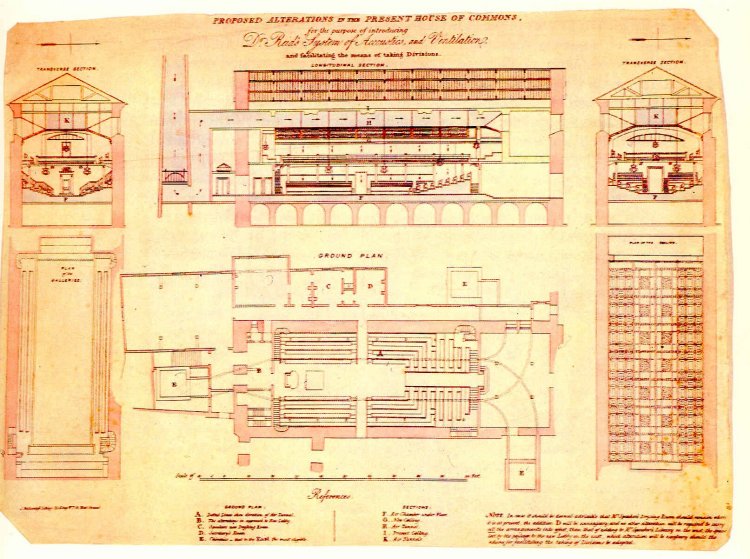 |
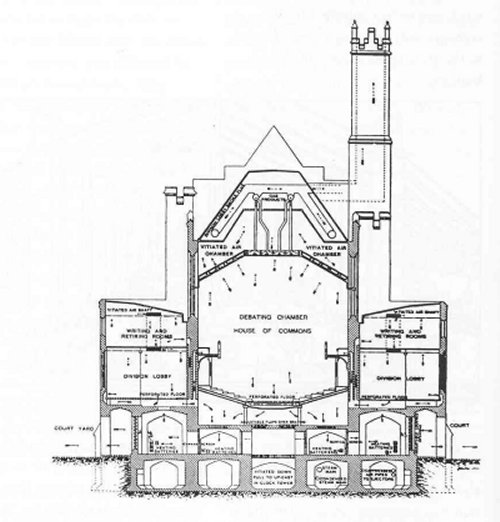 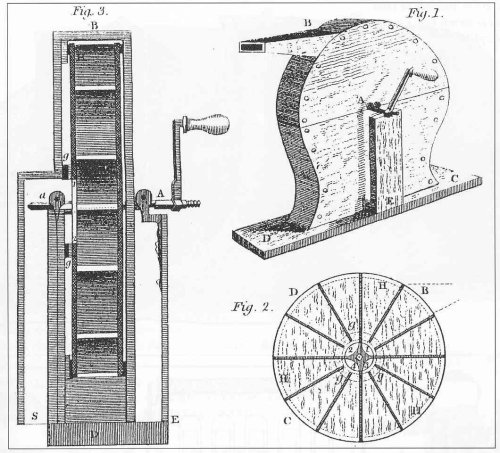
Fanning Wheel of Dr Desaguiliers 1735
The crank handle was turned by a man called "The Ventilator" |
Perhaps no buildings
have been subjected
to such numerous heating and ventilating experiments as the Houses of
Parliament, to which Sir Christopher Wren, Dr Desaguliers, the Marquis
de Chabannes, Sir Humphry Davy and many others directed their
attention.
Dr David Boswell Reid was responsible for the ventilation of the House
of Commons when it was rebuilt after destruction by fire (1834); a
chamber
was provided for moistening, drying, cooling and producing other
alterations
in the air, besides those affected by the hot-water apparatus. Air was
introduced
into the Commons Chamber through a great many holes in the floor and
risers.
The motive power for the forced ventilation was provided by a fire at
the
base of the upcast shaft (chimney). Cooling in summer was accomplished
by
nocturnal ventilation, by evaporation of water, by passing cold water
through
the heater battery, and in rare cases by the use of ice (a rudimentary
form
of air conditioning). To discover at any time what degree of heat the
persons above were enjoying a thermometer was pulled down by a string
from a concealed part of the House.
Though Reid’s plan probably represents the
first real attempts at environmental control it came in
for severe criticism. He and the architect, Sir Charles Barry,
were in continual conflict. Barry refused to give Reid any drawings and
Reid refused to do any drawings at all.
Dr Boswell Reid's scheme was still in use in 1891. |
| London
County Hall, 1922 |
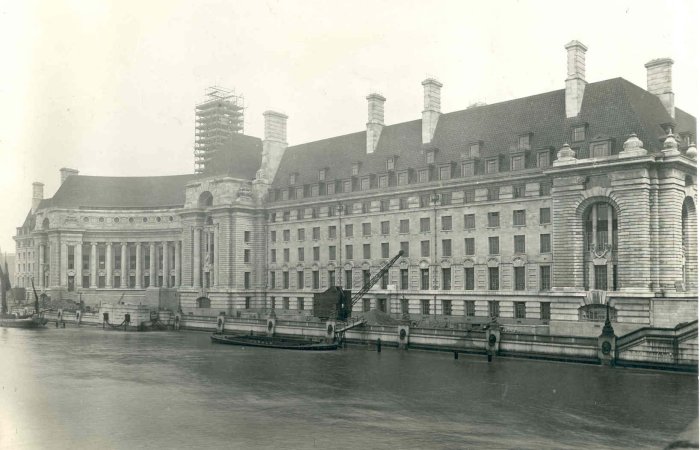
|
Weight of air moved, tons per hour
460
Number of radiator registers 1630 Number of plenum / extract registers 1450 Number of radiator and heating
loops 2150
Number of valves 6240 Length of piping, miles 30 Approx. number of fittings
40,000
|
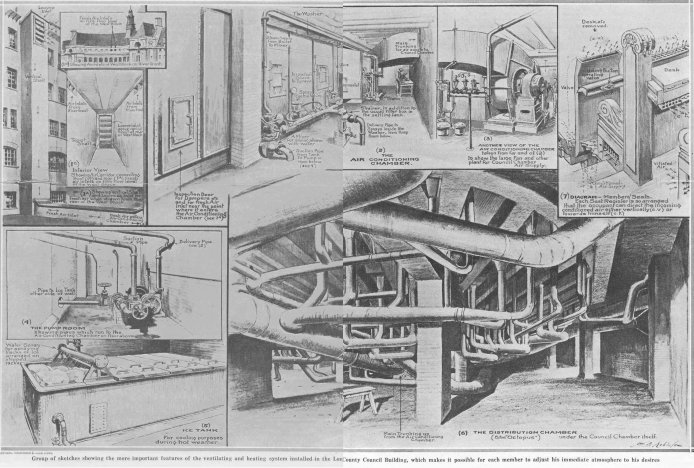
|
St George's Hall, Liverpool 1851 |
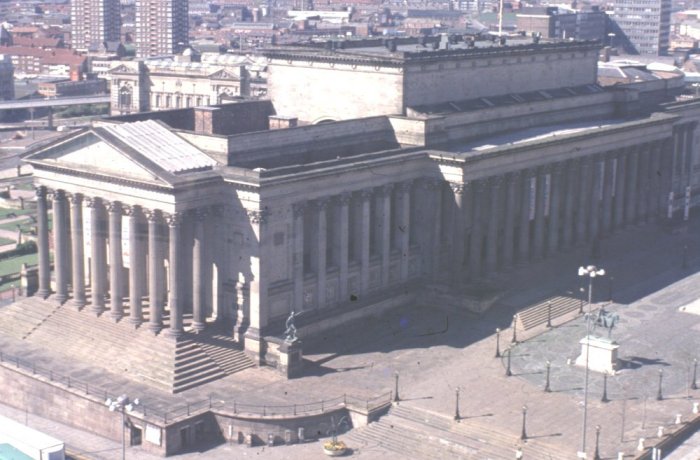
|
In the early 19th
century, it was
decided that Liverpool needed an appropriate building in which to hold
concerts and events. Plans were drawn up by the architect Harvey
Lonsdale Elmes and construction began (1842) but Elmes died leaving
completion of this outstanding neo-classical building to Professor C R
Cockerell. Dr David Boswell Reid was engaged to design a heating
and ventilating system, not included in Elmes original designs.
In 2005 the Heritage Group of the CIBSE awarded its first Blue Plaque to St George’s Hall recognising it as the World’s First Air-Conditioned Building. 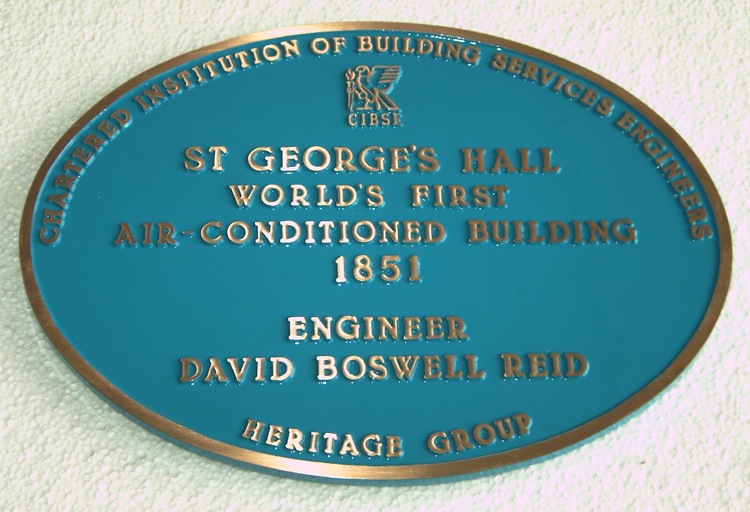 |
